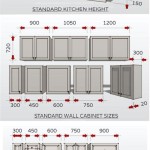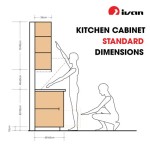Kitchen Cabinet Only: A Comprehensive Guide
The term "kitchen cabinet only" refers to the purchase and installation of kitchen cabinets without ancillary services often included in a larger kitchen remodeling project. This approach provides a specific focus on the core storage and aesthetic elements of the kitchen, allowing homeowners to manage other aspects of the renovation independently. Understanding the nuances of this strategy is crucial for successful implementation and cost-effective kitchen upgrades.
Opting for kitchen cabinet only installations can present a number of practical and financial advantages. It allows for greater control over the budget, scheduling, and selection of other crucial design elements. However, it also demands a higher degree of homeowner involvement and coordination. This article will explore the key considerations when pursuing a kitchen cabinet only approach, providing a detailed overview of the process, potential benefits, and potential drawbacks.
Understanding the Scope of Kitchen Cabinet Only Purchases
A kitchen cabinet only purchase typically includes the cabinets themselves – base cabinets, wall cabinets, specialty cabinets (e.g., pantry cabinets, corner cabinets), and often cabinet hardware like handles and knobs. It explicitly excludes other services that are usually part of a full kitchen remodel, such as demolition of existing cabinets, plumbing adjustments, electrical work, countertop installation, backsplash tiling, flooring upgrades, and painting. This clearly defined scope presents opportunities for cost savings if the homeowner is comfortable managing these other tasks themselves or hiring separate contractors.
The specific details of what is included in a "kitchen cabinet only" package should be meticulously reviewed with the supplier or retailer. For instance, some suppliers might include cabinet installation as a standard offering even within a "cabinet only" price, while others will strictly exclude it. Clarity up front is essential to avoid unexpected costs and misunderstandings later in the project. Always ensure a detailed itemized list of included components and services is provided in the quote.
Furthermore, it's important to determine the level of cabinet assembly provided. Are the cabinets delivered fully assembled, or are they flat-packed and require assembly by the homeowner or a separate contractor? This can significantly impact installation time and labor costs. Flat-packed cabinets are often more affordable, but the time and effort required for assembly must be factored into the overall project plan.
Benefits of Choosing Kitchen Cabinet Only
One of the most compelling reasons to choose kitchen cabinet only is cost control. By separating the cabinetry from other renovation services, homeowners can exercise greater discretion over each component of the project budget. This allows for prioritization of specific design elements and materials, as well as the ability to shop around for the best prices on individual services like countertop fabrication and installation, or plumbing and electrical modifications. Self-managing these separate contracts can often result in significant savings compared to a single, all-inclusive kitchen remodeling package.
Another advantage is increased flexibility in design and scheduling. Homeowners are not tied to the contractor's preferred vendors or timelines for ancillary services. They can choose countertops, appliances, and other fixtures that perfectly match their aesthetic preferences and budget, independent of the cabinet selection process. This also means greater flexibility in scheduling each phase of the project. If there are delays in one area (e.g., countertop delivery), it doesn't necessarily impact the cabinet installation schedule, provided that the necessary pre-installation preparations, like plumbing and electrical adjustments, have already been completed.
Furthermore, kitchen cabinet only purchases can empower homeowners to be more actively involved in the design and renovation process. By taking on the responsibility of coordinating different tradespeople and managing the project timeline, they gain a deeper understanding of the complexities involved and can ensure that their vision is realized to the fullest extent. This hands-on approach can be particularly rewarding for homeowners who enjoy DIY projects and are comfortable with project management tasks.
Considerations and Potential Challenges
While the kitchen cabinet only approach offers numerous benefits, it also presents specific challenges that homeowners should carefully consider. The most significant challenge is the increased responsibility for project management. The homeowner becomes the general contractor, responsible for coordinating different trades, managing schedules, and ensuring that all work is completed to code and specifications. This requires a significant time commitment and a high degree of organizational skills.
Another potential challenge is the coordination of plumbing and electrical work. Before installing new cabinets, it may be necessary to relocate plumbing lines or electrical outlets to accommodate the new cabinet layout. This work must be completed by licensed professionals and requires careful planning to ensure that it is done correctly and in a timely manner. Any delays in these areas can significantly impact the cabinet installation schedule.
Furthermore, it is important to accurately measure the kitchen space and account for any irregularities in the walls or floors. Inaccurate measurements can lead to improperly sized cabinets or installation difficulties. Professional measurement services are often available, but the homeowner is ultimately responsible for ensuring the accuracy of the measurements if they choose to handle this task themselves. Any errors in measurements can result in costly delays and modifications.
Finally, homeowners should be prepared to handle potential issues that may arise during the installation process. This could include damaged cabinets, missing hardware, or unforeseen structural problems. Having a contingency plan in place and a reliable source of information (e.g., online forums, experienced contractors) can help resolve these issues quickly and efficiently.
Practical Tips for a Successful Kitchen Cabinet Only Project
Prioritize meticulous planning. Before ordering cabinets, create a detailed kitchen layout plan, including precise measurements and specifications for each cabinet. Consider the placement of appliances, plumbing, and electrical outlets to ensure that the new cabinets will fit properly and function effectively. A well-thought-out plan can prevent costly mistakes and delays later in the project.
Obtain multiple quotes from different cabinet suppliers. Compare prices, materials, and warranty information to ensure that you are getting the best value for your money. Don't be afraid to negotiate prices or ask for discounts. It's also helpful to visit showrooms to see the cabinets in person and assess their quality firsthand.
Hire qualified and licensed contractors for plumbing and electrical work. Do not attempt to perform these tasks yourself unless you are a licensed professional. Improperly installed plumbing or electrical systems can be dangerous and may violate building codes. Always check the credentials and references of any contractor before hiring them.
Communicate effectively with all contractors involved in the project. Clearly communicate your expectations, deadlines, and budget constraints. Regularly check in with each contractor to ensure that they are on schedule and that the work is being done to your satisfaction. Open and honest communication is essential for a smooth and successful project.
Protect your investment by properly preparing the subfloor and walls before cabinet installation. Ensure that the subfloor is level and free of debris. Repair any cracks or damage in the walls. This will provide a solid foundation for the new cabinets and prevent future problems.
Inspect cabinets upon delivery for any signs of damage. Document any damage with photos and immediately notify the supplier. Do not proceed with installation until the damaged cabinets have been replaced or repaired. This will help you avoid disputes later in the project.
Follow the manufacturer's instructions carefully when installing the cabinets. Use the correct tools and techniques to avoid damaging the cabinets or voiding the warranty. If you are not comfortable installing the cabinets yourself, consider hiring a professional installer.
Maintain a clean and organized workspace throughout the project. This will help you avoid accidents and ensure that the work is done efficiently. Dispose of construction debris properly and keep the work area free of hazards.
Document the entire project with photos and notes. This will be helpful if you need to make warranty claims or if you decide to sell your home in the future. It's also a good way to track your progress and celebrate your accomplishments.
Finally, be patient and flexible. Kitchen renovations can be disruptive and time-consuming. Be prepared for unexpected delays and challenges. Stay positive and focused on the end result, and you will eventually have the kitchen of your dreams.
By carefully considering these factors and following these practical tips, homeowners can successfully implement a kitchen cabinet only approach and achieve a beautiful and functional kitchen upgrade while maintaining control over their budget and design preferences.

Kitchen With Only Base Cabinets Design Ideas

Kitchen With Only Base Cabinets Design Ideas

Kitchen With Only Base Cabinets Design Ideas

Kitchen With Only Lower Cabinets This Feature Upper W Lake House New Interior Design

Only Bottom Kitchen Cabinets Design Ideas

Home Two Door Single Drawer Cabinet Frame Only Newage S

Kitchen W Base Cabinets Drawers Only

The Counter Cabinet Jewett Farms

Kitchen With Only Base Cabinets Design Ideas

How To Find The Best Kitchen Cabinets 2024 Guide Forbes Home
Related Posts








